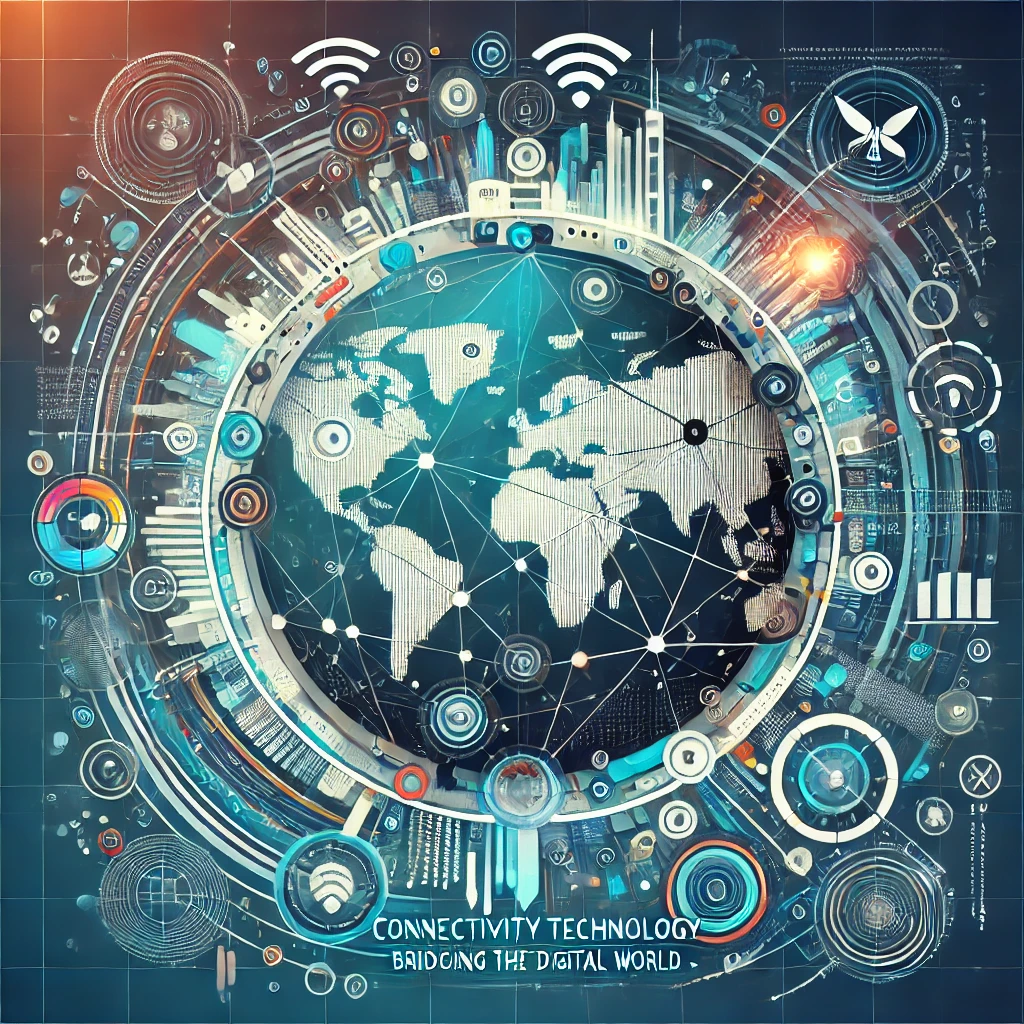In today’s fast-paced digital age, connectivity technology plays a crucial role in how we communicate, work, and interact. With devices, data, and people constantly connected, this technology makes it all possible. From wireless networks to advanced IoT systems, connectivity has transformed how the world operates. This article will break down the basics of connectivity technology, the types available, and its impact on everyday life.
Table of Contents
What is Connectivity Technology?
Connectivity technology refers to the systems and tools that link devices, networks, and users, enabling seamless data sharing and communication. This technology is foundational to digital infrastructure, allowing everything from mobile phones to industrial equipment to stay interconnected.
Why is Connectivity Technology Important?
With the rise of smart devices and the internet, connectivity technology is essential. It allows us to send information instantly, access real-time data, and work more efficiently. It has changed industries, created smart homes, and enabled remote work.
Types of Connectivity Technology
Connectivity technology comes in various forms, each serving different purposes. Here are some common types:
1. Wi-Fi Connectivity
Wi-Fi has become a staple in both homes and workplaces. This wireless network technology allows devices to connect to the internet without cables, providing flexibility and convenience.
Benefits of Wi-Fi
- Mobility: Users can connect their devices anywhere within the Wi-Fi range.
- Cost-Effective: It eliminates the need for extensive wiring.
2. Bluetooth Technology
Bluetooth is another popular wireless connectivity solution, primarily used for short-range data transfer. It connects devices like headphones, speakers, and fitness trackers.
Bluetooth Advantages
- Energy Efficient: Designed for low power use, making it ideal for small devices.
- Secure: Bluetooth offers encrypted connections, adding a layer of security.
3. Cellular Networks
Cellular networks provide connectivity for mobile devices, enabling users to make calls, send texts, and use data on the go. Cellular technology has evolved from 2G to 5G, with each generation bringing faster speeds and better reliability.
5G Technology
5G is the latest in cellular technology, promising faster speeds and lower latency. It enables real-time data exchange, benefiting applications like remote healthcare and autonomous driving.
4. Ethernet Connectivity
Ethernet is a wired connectivity solution often used in offices and industrial settings. It provides stable, high-speed internet access, which is especially important for applications that require reliable connectivity.
Advantages of Ethernet
- Stable Connection: Reduces the chance of interference or signal drops.
- Faster Speeds: Often faster than wireless options, making it ideal for data-heavy applications.
5. IoT Connectivity
IoT (Internet of Things) connectivity allows devices to communicate with each other, creating a network of smart devices. Examples include smart thermostats, security cameras, and home assistants.
IoT Benefits
- Automation: Devices can perform tasks without human intervention.
- Data Collection: Collects data that can be analyzed to improve efficiency.
Key Applications of Connectivity Technology
Connectivity technology is transforming many industries, improving efficiency and enhancing user experiences. Here are some areas significantly impacted by connectivity:
1. Smart Homes
Smart home technology connects devices like lights, thermostats, and security systems, allowing users to control them remotely. This creates a more convenient and efficient living environment.
2. Remote Work
Connectivity technology enables remote work by allowing employees to access data, attend virtual meetings, and collaborate with teams from anywhere. This flexibility has become especially valuable in recent years.
3. Healthcare
In healthcare, connectivity enables remote monitoring, telemedicine, and access to patient data in real-time. Doctors can provide better care, and patients have more accessible healthcare options.
4. Industrial Automation
In factories, connectivity technology supports automated machinery, predictive maintenance, and real-time monitoring. This results in improved productivity and reduced downtime.
The Future of Connectivity Technology
The future of connectivity is promising, with advancements such as 5G and IoT expanding possibilities. Here’s a look at what lies ahead:
1. Expansion of 5G Networks
5G technology is expected to become more widespread, enhancing the speed and quality of connectivity worldwide. This will support advancements in fields like virtual reality, autonomous vehicles, and advanced healthcare.
2. Growth of Smart Cities
Connectivity technology is fundamental to smart city development, where traffic management, energy distribution, and public services are optimized through connected systems. This will lead to more sustainable, efficient urban environments.
3. Enhanced Security Measures
As connectivity grows, so does the need for better security. Future connectivity technologies will likely integrate advanced encryption and AI-driven security solutions to protect against cyber threats.
Conclusion: The Power of Connectivity Technology
Connectivity technology has reshaped our lives, making information, communication, and efficiency accessible like never before. From simple Wi-Fi networks to advanced IoT systems, connectivity has enabled innovations that impact daily life and industries alike. As technology continues to evolve, the future of connectivity promises even more groundbreaking possibilities, enhancing how we live, work, and interact in a digital world.
